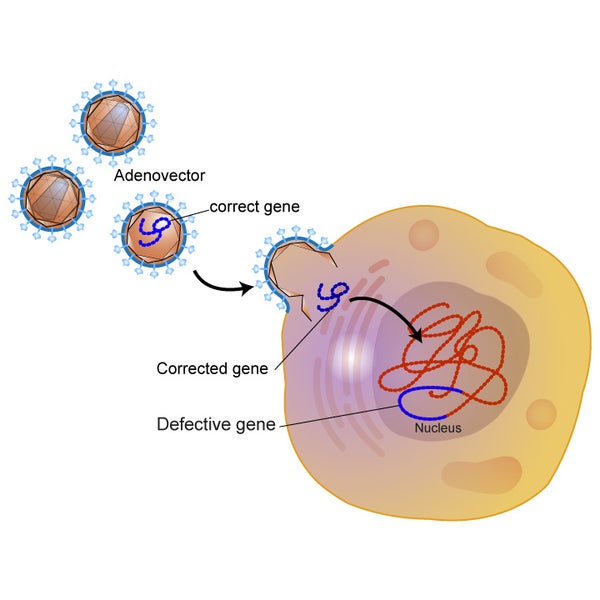This article was published in Scientific American’s former blog network and reflects the views of the author, not necessarily those of Scientific American
The Summer Olympics are poised to begin in Rio de Janeiro. Time to celebrate the extraordinary talent, fortitude and grace of athletes representing the world's diverse nations, from Iceland to Nigeria. And time to wonder how many competitors are boosting their performances with banned substances.
The World Anti-Doping Agency, WADA, which advises the Olympics and other sports organizations on illicit performance-enhancement, has accused Russia of carrying out a state-run doping program for its athletes. Russia could of course be just the tip of the iceberg.
When I started writing about science in the early 1980s, we worried whether athletes were amped up on amphetamines or steroids. Kid stuff. Recently, WADA officials have become increasingly concerned that contestants might boost their strength, speed and endurance by fiddling with their genes.
On supporting science journalism
If you're enjoying this article, consider supporting our award-winning journalism by subscribing. By purchasing a subscription you are helping to ensure the future of impactful stories about the discoveries and ideas shaping our world today.
Since the late 1990s, researchers have shown that, by inserting genes into mice and other animals, they can swell the animals' muscle mass, help cells repair themselves faster and boost the production of oxygen-toting red blood cells. The genes can be injected directly into the muscles of the target animal or slipped into the animal's own DNA by means of viruses.
A pioneer of this research is geneticist H. Lee Sweeney, who described his research in a 2004 Scientific American article, “Gene Doping.” Gene therapy is called “gene doping” when it is used for enhancement rather than treatment.
In the late 1990s, Sweeney inserted the IGF-1 gene (for insulin growth factor) into mice, boosting their strength by as much as 27 percent. Sweeney and other researchers hope that these sorts of gene therapies can benefit the elderly, patients suffering from muscular dystrophy and even astronauts who lose muscle mass in a zero-gravity environment.
Naturally, athletes—after reading media reports about "Schwarzenegger mice"--became interested in gene therapies too. Ever since his work was first publicized, jocks have begged Sweeney, in vain, to test gene therapy on them. He worries that athletes will eventually find someone to dope their genes, just as they found suppliers for steroids and other illegal performance-enhancers.
In principle, gene therapy can be aimed at specific targets, such as fast-twitch or slow-twitch muscle cells, to benefit specific athletes, such as a shot-putter, weight-lifter, sprinter or high-jumper.
Until recently, experts thought tests for gene doping would require muscle biopsies, which would entail removing a chunk, albeit tiny, of muscle. Doping genes, the proteins they generate and their viral vehicles are difficult to detect in blood and urine tests. But WADA is reportedly considering a gene-doping blood test developed by an Australian researcher.
How concerned should we be that the Olympians in Rio have fiddled with their genes? Not very, because so far gene therapy for humans has fallen far short of its hype. (The same is true for behavioral genetics. See Further Reading.)
Decades ago, gene-therapy proponents predicted that it would soon eliminate many diseases, from cystic fibrosis to early-onset breast cancer, traceable to a defective gene. Some enthusiasts even foresaw the advent of genetically engineered "designer babies" who would grow up to be smarter than Nobel laureates and more athletic than Olympians.
Not even the more modest predictions have been fulfilled. More than 2,000 gene therapy trials have been carried out around the world, according to the Journal of Gene Medicine, and the results have been disappointing. Yes, China approved a gene therapy for cancer in 2004, and this year, Europe Union regulators approved a therapy for children with severe combined immune deficiency.
But in the U.S., which accounts for more than half of the gene-therapy trials carried out worldwide, not a single therapy has been approved for sale by the Food and Drug Administration. Gene therapy can trigger unpredictable, fatal responses from the body's immune system. The National Institutes of Health warns that gene therapy “can have very serious health risks, such as toxicity, inflammation, and cancer."
Sweeney, the gene-doping expert, told New York Magazine last year that for gene-doping to work, “the athlete's immune system would need to be suppressed, so the body doesn't try to fight off what it identifies as a virus. It's a dangerous process that will take a long time to perfect.”
There may be a few wannabe Olympians who risk their careers, health and lives by getting a rogue scientist to tweak their genes. But I doubt that genetic engineering will have a significant impact on the Olympics anytime soon.
If gene doping can be done safely, that should be cause for celebration, because it would mean gene therapy is finally beginning to fulfill its enormous potential. And as my Scientific American colleague Steve Mirsky has pointed out, world-class athletes already possess advantages, including genetic mutations, that boost their performance. Maybe gene doping is just a way to level the playing field.
Addendum: This is an updated version of a 2012 post.
Further Reading:
Have researchers really discovered any genes for behavior?
My Problem with “Taboo” Behavioral Genetics? The Research Stinks!
Hype of “Feel-Good Gene” Makes Me Feel Bad.
New York Times Hypes "Infidelity Gene."
Quest for Intelligence Genes Churns out More Dubious Results.
Should Research on Race and IQ Be Banned?
For a fascinating look at the genetics of athletic performance, see also “The DIY Scientist, the Olympian, and the Mutated Gene,” by David Epstein, author of the bestseller The Sports Gene.
